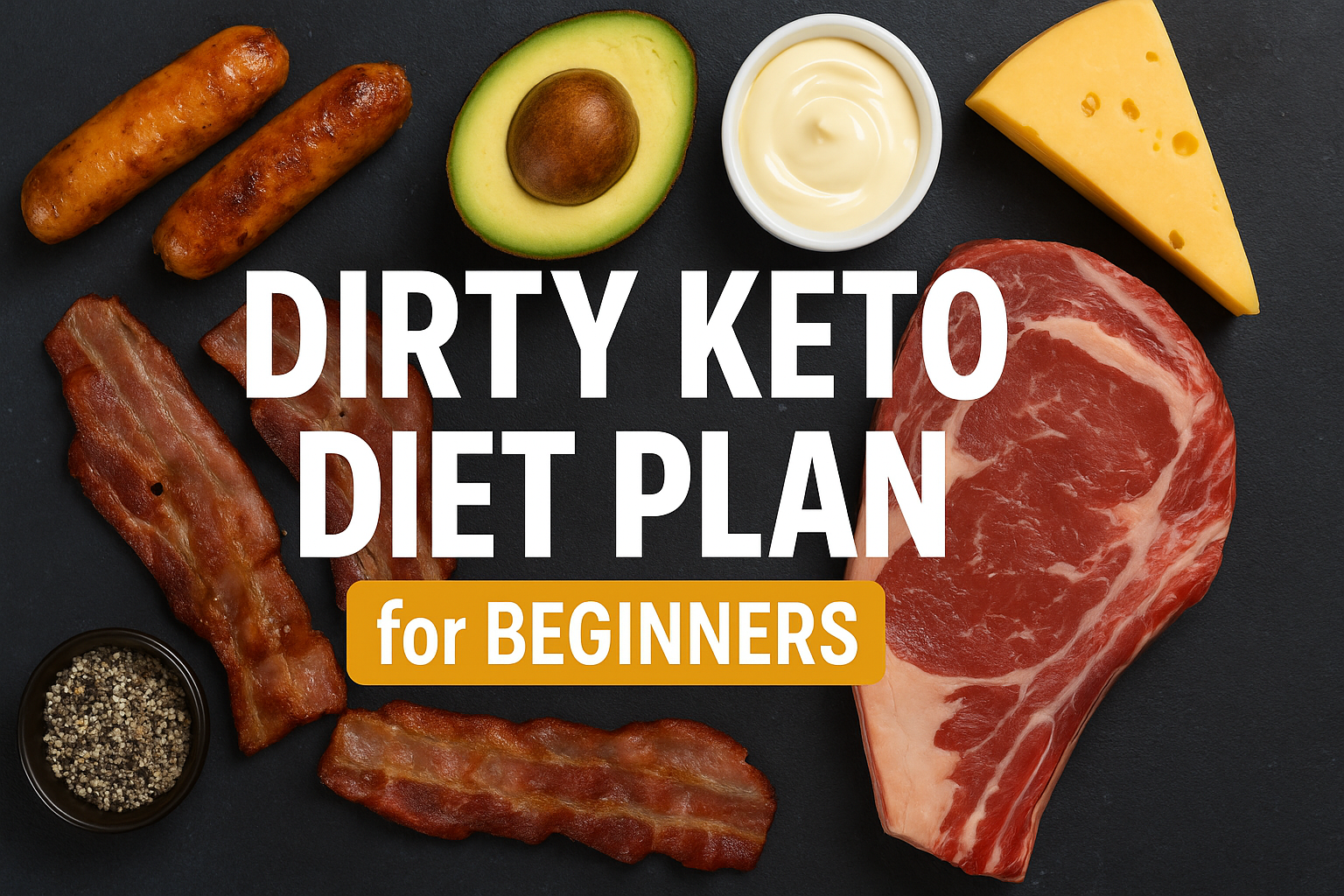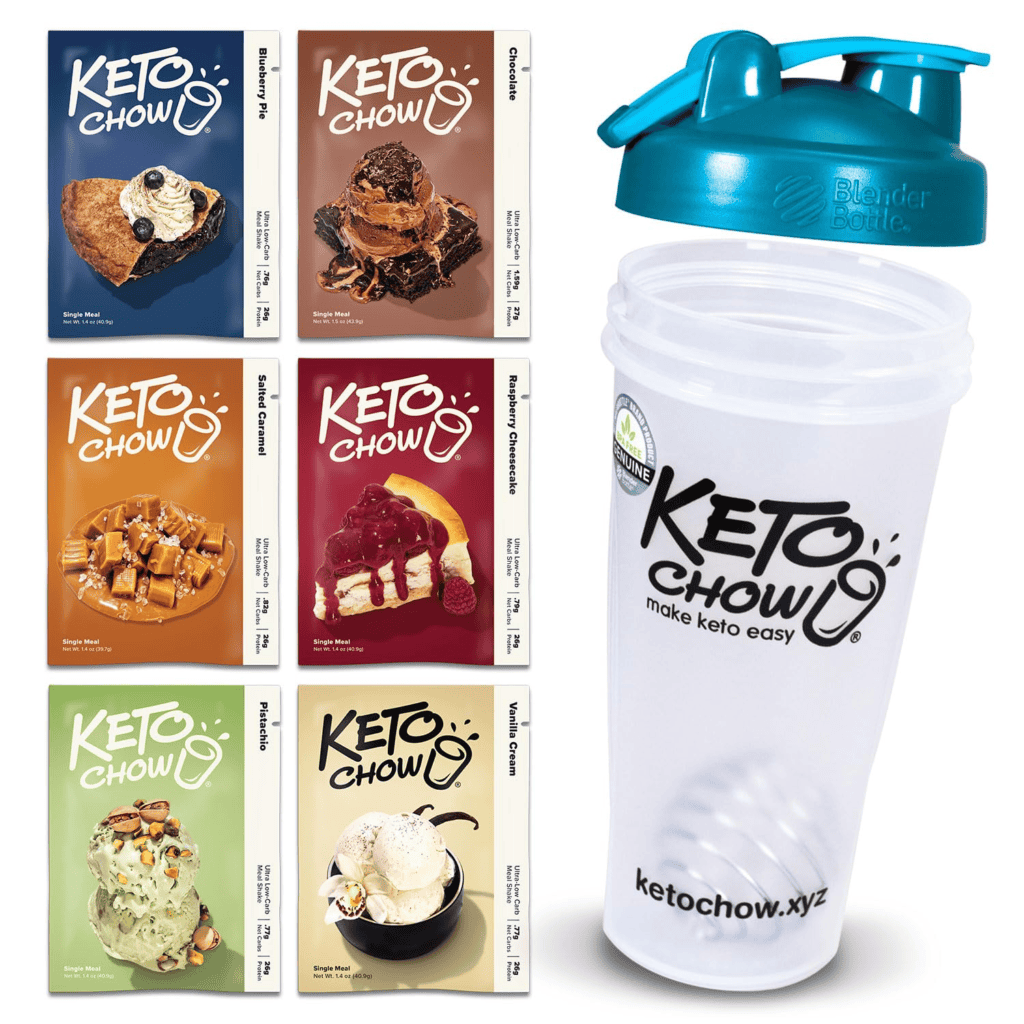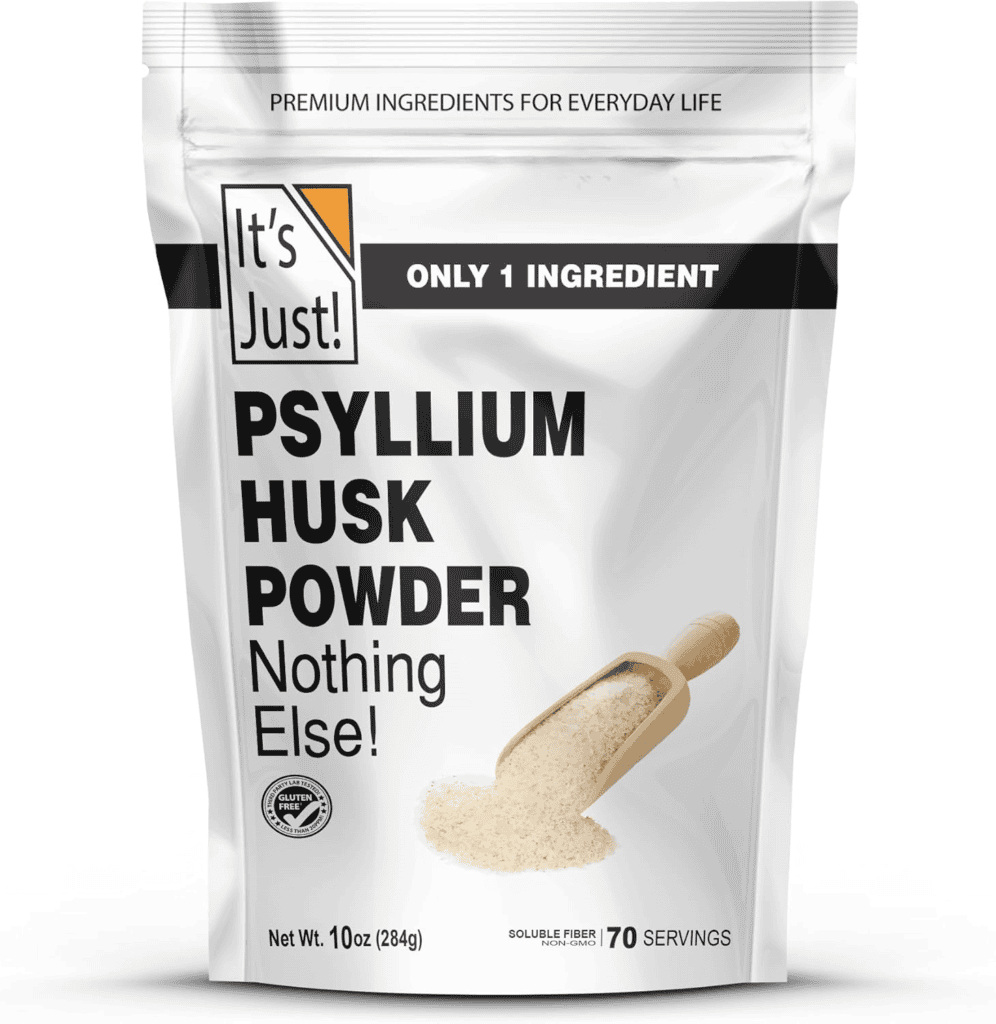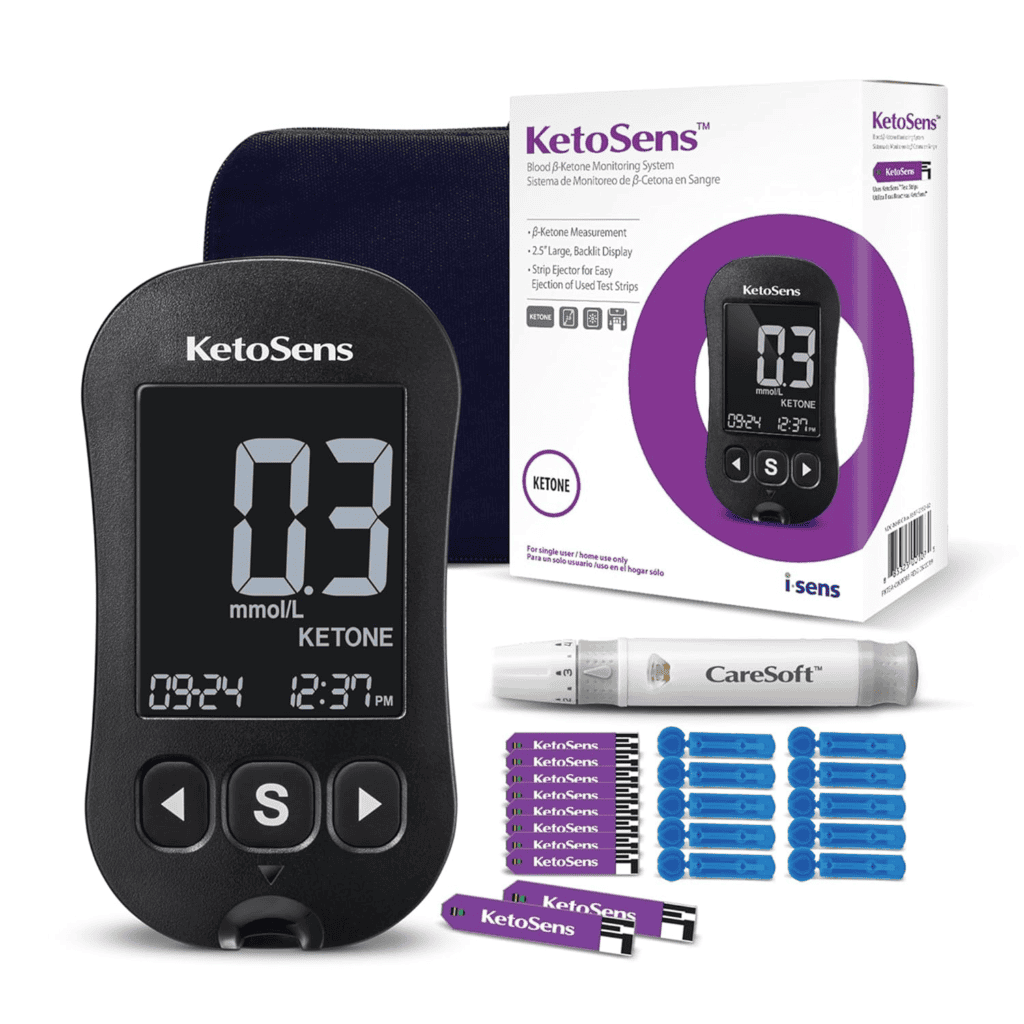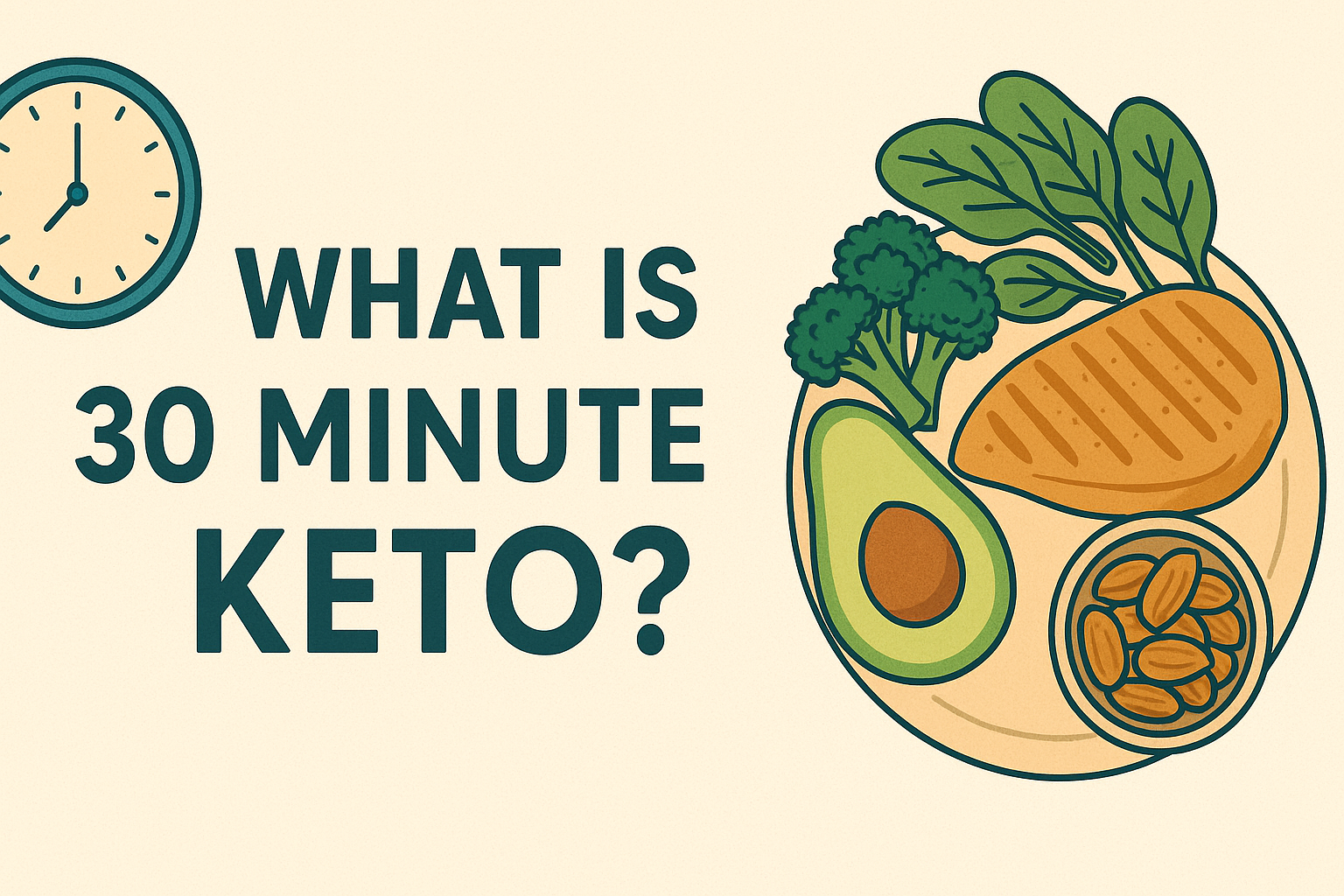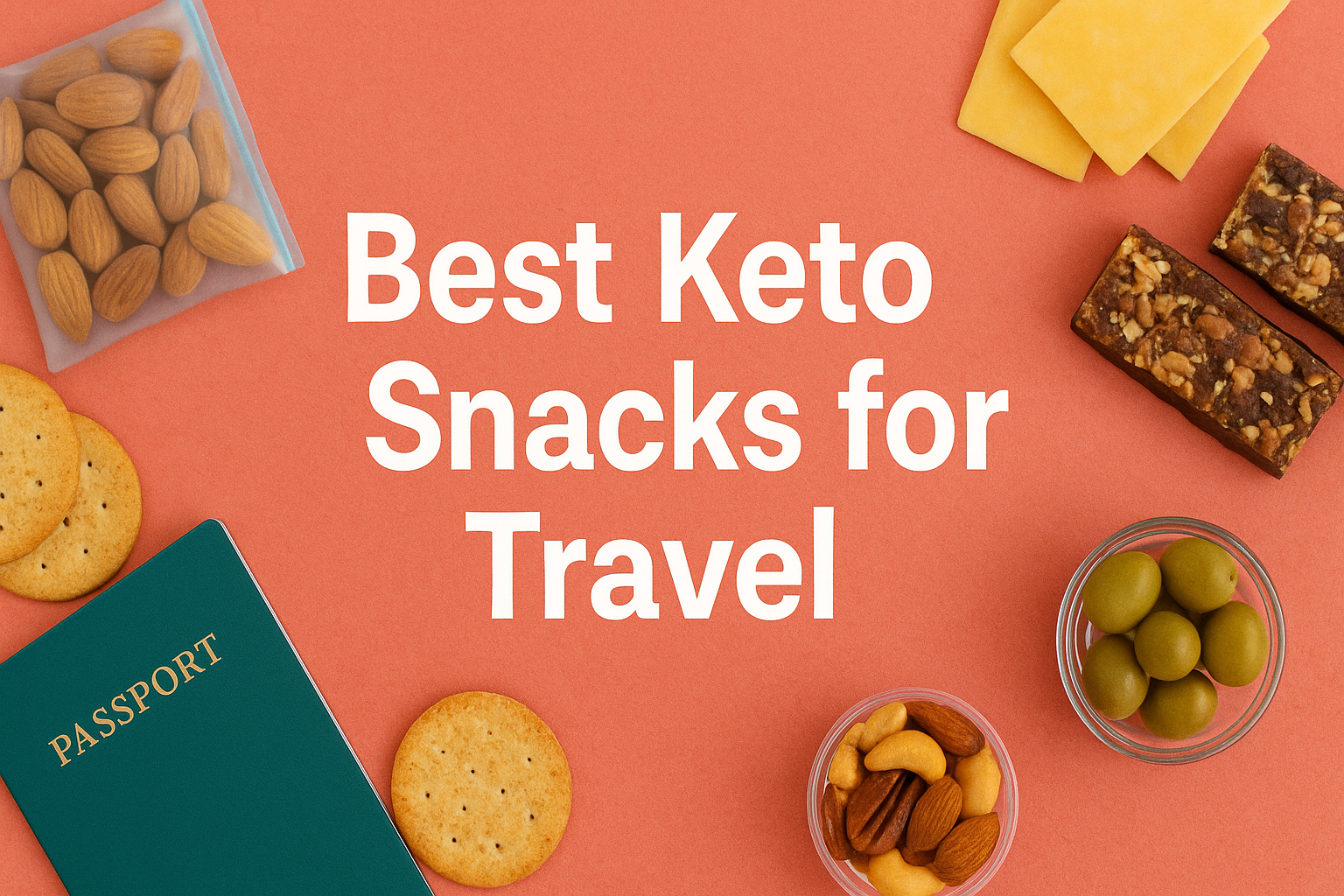As someone who’s experimented with various forms of keto over the years, I’ve found that dirty keto offers a unique blend of convenience and results. But it’s not without its controversies and potential pitfalls.
In this comprehensive guide, I’ll walk you through everything you need to know about starting a Dirty Keto Diet Plan for Beginners, from its basic principles to practical tips for success. Whether you’re looking for quick, pre-packaged options or fast food swaps, this plan will help you stay on track while keeping ketosis easy and accessible.
Want a quick and delicious snack to fuel your keto journey? Try Quest Protein Bars, packed with protein and low in net carbs—perfect for a beginner’s dirty keto plan.
Affiliate Disclaimer: This article contains affiliate links, meaning I may earn a commission if you make a purchase through these links. This helps support my work at no additional cost to you.
Understanding Dirty Keto: The Basics
Dirty keto follows the same macronutrient ratios as traditional keto: about 70-75% fat, 20-25% protein, and 5-10% carbohydrates. The key difference is the quality and source of these macronutrients.
While clean keto emphasizes whole, unprocessed foods, dirty keto allows for more flexibility, including processed and packaged options. The theory behind dirty keto is straightforward: as long as you’re maintaining the fixed macronutrient balance and staying in ketosis, the source of your calories doesn’t matter as much.
This approach can make the diet more accessible and easier to follow, especially for people with busy lifestyles or limited cooking skills. However, the long-term health effects of dirty keto are not as well-studied compared to clean keto or other balanced diets.
While it can lead to fat loss and improved blood sugar control in the short term, there are potential risks to consider.
Implementing a Dirty Keto Diet: A Step-by-Step Guide
1. Calculate Your Macros
The first step in starting a dirty keto diet is to decide your ideal macronutrient intake. Use our online keto calculator to figure out your optimal fat, protein, and carb intake based on your age, weight, height, and activity level.
This will give you a personalized target to aim for each day.
For example, a 35-year-old woman weighing 150 pounds and standing 5’6″ tall with a moderate activity level might have the following daily macro targets:
- Fat: 133g (75% of calories)
- Protein: 75g (20% of calories)
- Carbs: 20g (5% of calories)
Remember, these numbers are just an example. Your personal macros may differ based on your individual factors and goals.
2. Stock Up on Keto-Friendly Convenience Foods
One of the main advantages of dirty keto is the ability to rely on convenient, pre-packaged foods. Here’s a list of some popular dirty keto staples:
- Pre-cooked bacon: A quick and easy source of fat and protein.
- Cheese sticks: Portable and satisfying snacks.
- Pork rinds: Crunchy, zero-carb snack option.
- Low-carb protein bars: Great for on-the-go nutrition.
- Pepperoni slices: Flavorful and fatty snack.
- Sugar-free Jell-O: A sweet treat without the carbs.
- Canned tuna or salmon: Quick protein sources.
- Beef jerky (check for added sugars): Portable protein.
- Nuts and seeds (in moderation): Healthy fats and protein.
- Sugar-free beverages: Keep you hydrated without carbs.
When shopping, always check the nutrition labels to confirm the foods fit within your macro goals.
For a convenient option, consider stocking up on Rip Van Chocolate Hazelnut Wafer Cookies, Keto, low-carb, low sugar chocolate treat.
3. Master the Art of Label Reading
On a dirty keto diet, reading nutrition labels becomes an essential skill. Pay close attention to:
Net Carbs: This is the total carbohydrates minus fiber and sugar alcohols. Many products marketed as “low-carb” may still contain more net carbs than you’d expect.
Hidden Sugars: Look out for ingredients ending in “-ose” (like fructose or dextrose) or syrups, which are all forms of sugar.
Serving Sizes: Be aware that the nutritional information is often based on a single serving, which may be smaller than you expect.
Fat Content: Ensure the product has enough fat to help you meet your daily goals.
For example, a “keto-friendly” protein bar might have the following nutrition facts per serving:
- Total Carbohydrates: 21g
- Dietary Fiber: 13g
- Sugar Alcohols: 5g
- Net Carbs: 3g (21g – 13g – 5g)
- Fat: 16g
- Protein: 20g
This would be considered a decent dirty keto option, as long as it fits within your daily macro goals.
4. Plan Your Meals
While dirty keto allows for more flexibility, having a rough meal plan can help you stay on track. Here’s a sample day of dirty keto eating:
Breakfast: Two hard-boiled eggs and a cheese stick
Lunch: Canned tuna mixed with mayo, served with pork rinds
Dinner: Bunless fast-food burger with bacon and cheese
Snacks: Beef jerky, a handful of nuts, or sugar-free Jell-O
Remember, the key is to hit your macro targets while keeping your net carbs low enough to maintain ketosis.
Looking for a quick snack? Try Quest Nutrition Protein Bars, packed with protein and low in net carbs, perfect for dirty keto! Check the price HERE!
5. Incorporate Fast Food Options
One of the biggest advantages of dirty keto is the ability to eat fast food while staying in ketosis. Many fast food chains offer keto-friendly choices when you’re on the go.
Here are some popular options:
McDonald’s: Bunless Quarter Pounder with cheese and bacon.
Burger King: Grilled chicken sandwich without the bun.
Wendy’s: Baconator without the bun.
Chipotle: Salad bowl with meat, cheese, sour cream, and guacamole.
Subway: Any sandwich made into a salad.
When ordering, always ask for no bun, no ketchup, and no sugary sauces. Add extra cheese, bacon, or avocado for more fat.
Pro Tip: For a tasty, on-the-go meal replacement, grab Keto Chow Meal Replacement Shake, available in delicious flavors. Find it HERE!
Common Pitfalls and How to Avoid Them
1. Nutrient Deficiencies
One of the greatest challenges with dirty keto is the potential for nutrient deficiencies. The reliance on processed foods can lead to inadequate intake of vitamins, minerals, and fiber.
To mitigate this risk:
- Take a high-quality multivitamin daily.
- Try to incorporate some whole foods into your diet when possible.
- Consider adding a fiber supplement to your routine.
- Eat a variety of meats, not just bacon and beef.
A great option for boosting your fiber intake is It’s Just! – Psyllium Husk Powder, perfect for digestion and keto-friendly. Available HERE
2. Difficulty Maintaining Ketosis
Another common issue is difficulty maintaining ketosis because of hidden carbs in processed foods. To avoid this:
- Always double-check nutrition labels
- Be wary of foods marketed as “low-carb” or “keto-friendly”
- Use a blood ketone meter to regularly check your ketone levels
- Keep a food diary to track your daily carb intake
For accurate ketone tracking, try the KetoSens Blood Ketone Monitoring Starter Kit, a must-have for serious keto dieters. Check it out HERE
3. Overeating
Overeating is also a risk on dirty keto, as many convenience foods are calorie-dense. While ketosis can help suppress appetite, it’s still possible to consume too many calories and stall fat loss.
To prevent overeating:
- Pay attention to portion sizes
- Listen to your body’s hunger cues
- Use smaller plates to control portions
- Avoid mindless snacking while watching TV or working
Need portion control? Consider Pre-Portioned Keto Snacks, such as JUSTIN’S Classic Gluten-Free Almond Butter Squeeze Packs for easy snacking. Get yours HERE!
4. Digestive Issues
The lack of fiber in many dirty keto foods can lead to constipation and other digestive problems. To combat this:
- Drink plenty of water
- Include fibrous vegetables when possible
- Consider a fiber supplement
- Try incorporating fermented foods like sauerkraut or kimchi
Adapting Dirty Keto to Different Scenarios
Dirty keto can be particularly useful in certain situations:
Travel
When you’re on the road, it’s much easier to find keto-friendly fast food or convenience store options than to prepare clean keto meals. Some travel-friendly dirty keto options include:
- Beef jerky and cheese sticks from gas stations
- Bunless burgers from fast food restaurants
- Hard-boiled eggs and pre-cooked bacon from convenience stores
- Nuts and seeds from airport kiosks
Busy Work Weeks
Meal prep can be time-consuming. Having some dirty keto options on hand can help you stay on track during hectic periods.
Try:
- Keeping frozen, microwaveable low-carb meals in your freezer
- Stocking up on canned tuna or chicken for quick protein
- Having a supply of low-carb protein bars for on-the-go meals
- Preparing a large batch of keto-friendly casserole at the start of the week
Social Situations
Dirty keto can make it easier to join in social events without feeling overly restricted. Some strategies include:
- Ordering bunless burgers or grilled chicken at restaurants
- Bringing your own keto-friendly snacks to parties
- Focusing on meat and cheese options at buffets
- Opting for spirits with sugar-free mixers when drinking
However, it’s important to remember that dirty keto should ideally be a short-term solution or used in moderation. For optimal health, aim to incorporate more whole foods and clean keto principles when possible.
Building on Basics: From Dirty Keto to Keto Mastery
While dirty keto can be a useful starting point, many people find that they naturally gravitate towards cleaner eating as they become more experienced with the ketogenic lifestyle. As you become more comfortable with keto principles, you might start experimenting with:
Keto-Friendly Whole Food Recipes
Try incorporating more whole foods into your diet by experimenting with recipes like:
- Cauliflower rice stir-fry.
- Zucchini noodles with homemade alfredo sauce.
- Avocado and egg salad.
- Baked salmon with asparagus.
Intermittent Fasting
Many keto dieters find success combining keto with intermittent fasting. Common fasting schedules include:
- 16/8: Fasting for 16 hours and eating within an 8-hour window.
- 5:2: Eating normally for 5 days and restricting calories for 2 non-consecutive days.
- OMAD (One Meal a Day): Eating all daily calories in a single meal.
Fat Adaptation
As your body becomes more effective at burning fat for fuel, you may notice:
- Increased energy levels
- Improved mental clarity
- Reduced hunger and cravings
- Better athletic performance
Understanding the basics of dirty keto can also help you make better choices when you do indulge in processed foods. You’ll develop a keener eye for hidden carbs and a better understanding of how different foods affect your ketosis.
Practical Exercises to Reinforce Your Dirty Keto Knowledge
1. Restaurant Challenge
Next time you eat out, try to construct a dirty keto meal from the menu. Here’s how:
- Choose a protein source (e.g., grilled chicken, steak, fish).
- Ask for extra fats (butter, olive oil, cheese).
- Replace high-carb sides with low-carb options (salad instead of fries).
- Avoid sugary sauces and dressings.
After your meal, calculate the approximate macros. This exercise will help you become more adept at making keto-friendly choices in various dining situations.
2. Convenience Store Keto
Visit your local convenience store and identify 10 dirty keto-friendly snacks. Compare their nutritional profiles, paying attention to:
- Net carbs
- Fat content
- Protein content
- Calorie density
This exercise will help you become more familiar with quick, on-the-go options for maintaining your keto diet.
3. Fast Food Makeover
Take your favorite fast food meal and brainstorm how to make it keto-friendly. For example, if you love a Big Mac, you might:
- Order it without the bun.
- Skip the special sauce (high in sugar).
- Add extra cheese and bacon.
- Replace fries with a side salad (no croutons, use full-fat dressing).
Then try ordering your keto-fied version! This exercise helps you learn how to adapt your favorite foods to fit your new lifestyle.
4. Label Detective
Spend 15 minutes in the “low-carb” section of your grocery store, reading labels. Identify products that claim to be keto-friendly but might kick you out of ketosis.
Look out for:
- Hidden sugars.
- High net carb content.
- Artificial sweeteners that may affect blood sugar.
- Low fat content (remember, keto is a high-fat diet).
This exercise will sharpen your label-reading skills and help you avoid products that could derail your keto efforts.
5. Macro Tracking
For one week, track your macros while following a dirty keto diet. Use a app like MyFitnessPal or Cronometer to log everything you eat and drink.
Pay attention to:
- How different convenience foods fit into your daily allowances.
- Which foods are surprisingly high in carbs.
- How your fat intake affects your satiety.
- Any patterns in your eating habits.
This exercise will give you a clear picture of how your food choices impact your overall macro balance and help you make more informed decisions moving forward.
Key Takeaways
- Dirty keto follows standard keto macros but allows for processed foods, offering more convenience and flexibility.
- Careful label reading and portion control are crucial on dirty keto to avoid hidden carbs and overeating.
- Supplement with vitamins and incorporate whole foods when possible to mitigate potential nutrient deficiencies.
- Dirty keto can be particularly useful for travel, busy work weeks, and navigating social situations.
- As you become more experienced with keto, aim to incorporate cleaner eating habits and whole foods for optimal long-term health.
People Also Asked
What is dirty keto?
Dirty keto is a variation of the ketogenic diet that focuses on maintaining the standard keto macronutrient ratios while allowing for more processed and convenience foods.
Is dirty keto effective for fat loss?
Dirty keto can be effective for fat loss in the short term, as it still promotes ketosis. However, the long-term health effects and sustainability of this approach are less certain.
Can I eat fast food on dirty keto?
Yes, you can eat fast food on dirty keto. Many fast food chains offer keto-friendly options when you remove the bun and high-carb toppings.
What are some dirty keto snacks?
Popular dirty keto snacks include pork rinds, cheese sticks, beef jerky, and low-carb protein bars. Always check the nutrition labels to confirm they fit your macros.
How many carbs can I eat on dirty keto?
The carb limit on dirty keto is typically the same as standard keto, around 20-50 grams of net carbs per day. However, individual tolerance may vary.
Is dirty keto safe long-term?
The long-term safety of dirty keto has not been well-studied. While it may lead to short-term fat loss, relying heavily on processed foods could potentially lead to nutrient deficiencies over time.
Can I drink alcohol on dirty keto?
Some alcoholic beverages can fit into a dirty keto diet, particularly spirits mixed with sugar-free mixers. However, alcohol can slow down fat burning and may lead to overeating.
How do I know if I’m in ketosis on dirty keto?
You can use ketone test strips, blood ketone meters, or look for common signs of ketosis such as decreased hunger, increased energy, and a metallic taste in your mouth.
Can I eat vegetables on dirty keto?
While dirty keto allows for more processed foods, you can still include low-carb vegetables in your diet. Options like spinach, broccoli, and cauliflower can provide important nutrients.
What’s the difference between clean keto and dirty keto?
Clean keto emphasizes whole, unprocessed foods, while dirty keto allows for more processed and packaged options as long as they fit the macronutrient ratios.
Final Thoughts
Dirty keto can be an effective way to stay in ketosis while allowing for flexibility and convenience. However, to ensure long-term success, be mindful of nutrition quality, portion sizes, and hidden carbs.
Want to simplify your keto journey? Stock up on essential keto-friendly foods and tools by checking out these recommended products:
- Quest Protein Bars – Shop here
- Keto Chow Meal Replacement Shake – Find it here
- It’s Just! – Psyllium Husk Powder – Buy now
- KetoSens Blood Ketone Monitoring Starter Kit – Order today
- JUSTIN’S Classic Gluten-Free Almond Butter Squeeze Packs – Get them here
By making smart choices, you can enjoy the convenience of dirty keto while minimizing potential downsides!
